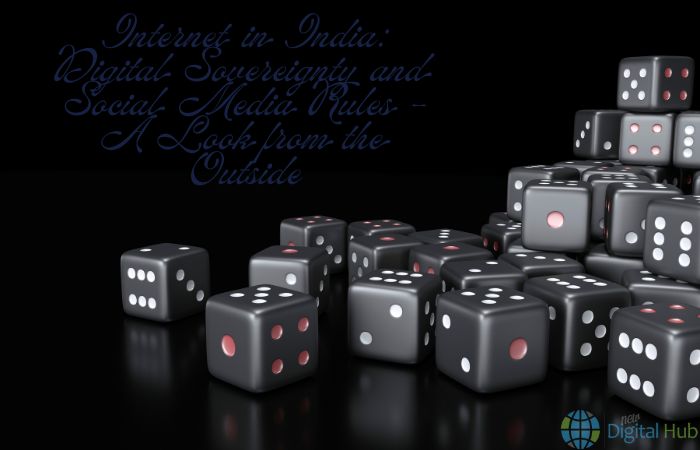Want to know what people see from the outside when they look at what’s happening on the internet in India? Place a couple of bets on best online casino in Canada and read this outsider’s perspective.
India is now one of the most online countries in the world. Millions of people go online every day — scrolling social media, watching videos, paying for things through apps. But there’s also a big discussion going on: digital sovereignty and how the government should control social media.
What is digital sovereignty and why does it matter?
In simple words, digital sovereignty means a country wants to control what happens in its online space. This includes keeping important data inside the country and making sure online platforms follow local laws instead of only their own rules.
For India, this is a big deal. The country has over 800 million internet users, and more and more people get their news, chat with friends, or run businesses through social media. But there’s a risk: user data can be stored abroad, and foreign companies’ algorithms can decide what people see in their feeds.
The Indian government says this needs to be under the country’s control to protect users and stop outside interference.
Example
In 2020, India banned 59 Chinese apps, including TikTok and WeChat, saying they were a national security risk. The government claimed these apps could send user data abroad or be used for spying. This was one of the first big moves in India’s push for digital sovereignty.
Why focus on social media?
In India, social media is not just for fun. WhatsApp, Instagram, Facebook, YouTube, and local platforms like ShareChat have become giant public spaces where people talk and share information.
But here’s the problem: on one hand, social media gives people freedom to speak and share ideas. On the other, it’s easy to spread fake news, hate, or things that can cause fights.
There have been cases where rumors in messaging apps led to panic or even violence. That’s why the government wants platforms to quickly remove dangerous posts and share info about who posted them.
Twitter conflict
In 2021, India had a big fight with Twitter. The government told Twitter to delete hundreds of posts related to farmer protests, calling them “fake news” and “dangerous.” Twitter refused at first, saying it would hurt free speech. Then police visited Twitter’s offices, and in the end, some posts were taken down.
New rules for social media
In 2021, India made new rules for digital platforms. Big social media companies now must:
- Have official representatives in India to make sure laws are followed.
- Remove banned or illegal content within 24 hours of a complaint.
- In some cases, reveal who originally posted a certain message or video.
Also, the government wants Indian user data stored on servers inside India — part of its digital sovereignty plan.
WhatsApp case
That same year, WhatsApp sued the Indian government. The app said that revealing message senders would break end-to-end encryption and harm user privacy. The case is still going on.
The debate
Not everyone likes these rules. Critics say too much control could kill free speech. For example, if the government calls a post “dangerous,” it might get deleted even if it’s just someone’s opinion.
Tech companies also aren’t happy — following these laws costs money and adds risks. Some have even said they might leave India if rules get too strict.
On the other side, many experts think the rules are needed. India is huge and diverse, and without some control, the internet could become chaotic, with people easily misled by false info.
What do people think?
Reactions are mixed. Some Indians like the idea that their data stays in the country. Others worry it means more censorship and less access to information.
Young people in cities are used to global apps and don’t want them blocked. But in rural areas, many welcome strict control, especially if it helps stop scams and fake news.
What’s next?
The discussion continues: where’s the line between safety and free speech? How can the internet stay open but still protect users?
Experts think India will build more of its own social networks and messaging apps that fully follow local laws. Foreign companies will have to adapt if they want to stay in the market.
Either way, India is now one of the world’s main examples of a country trying to shape its own digital rules in the age of a global internet — a tricky balance between government, business, and the people.



